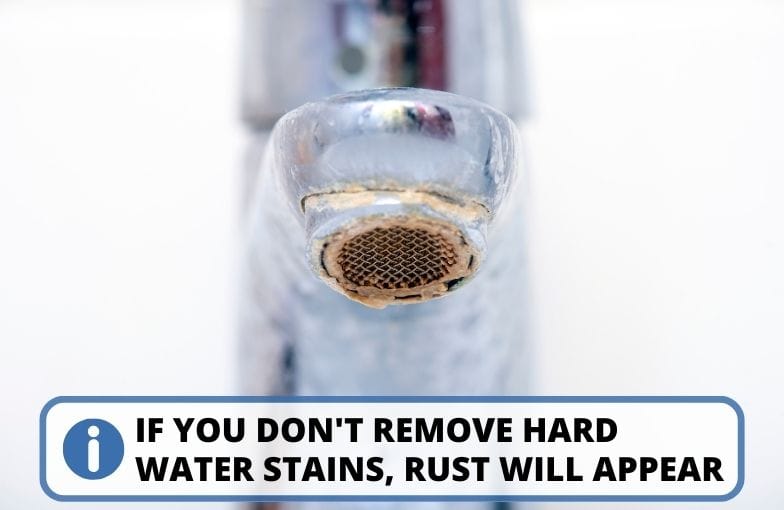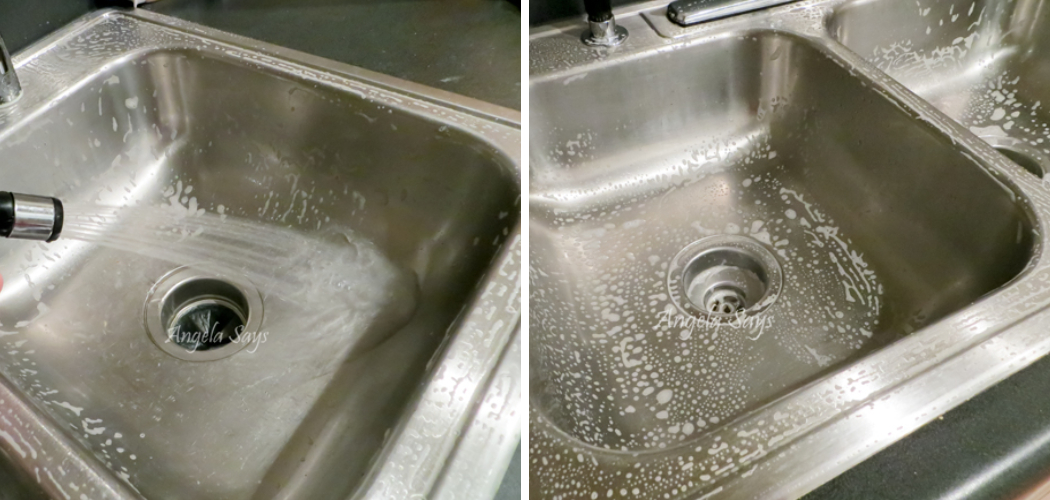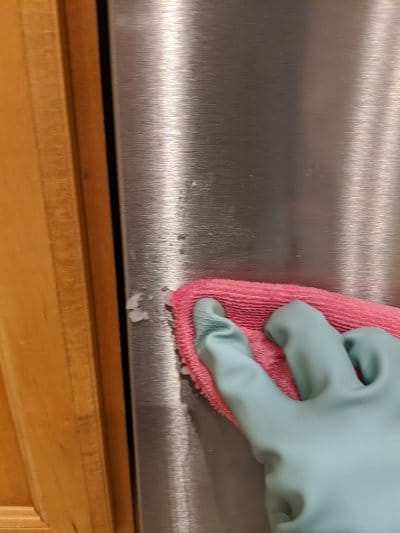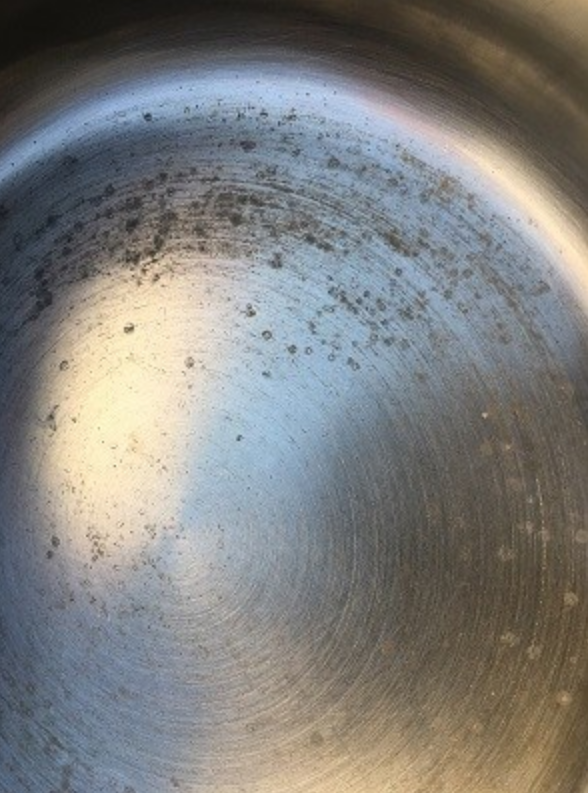What Causes Water Marks On Stainless Steel
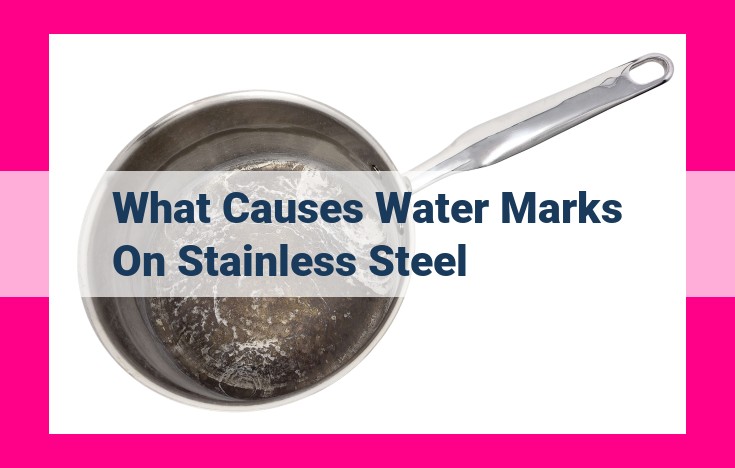
Urgent reports are flooding in from households and commercial kitchens nationwide: stainless steel surfaces are being plagued by unsightly water marks. These persistent blemishes are more than just cosmetic annoyances; they signal underlying issues that demand immediate attention.
The sudden proliferation of these marks is raising concerns about water quality and improper cleaning methods. We investigate the primary culprits behind these stubborn stains and offer practical solutions to combat this pervasive problem.
The Culprits Behind the Spots
Water marks on stainless steel are predominantly caused by mineral deposits left behind when water evaporates. These minerals, primarily calcium and magnesium, are naturally present in hard water.
Hard Water's Harsh Reality
According to the U.S. Geological Survey (USGS), approximately 85% of homes in the United States have hard water. This widespread prevalence makes mineral deposits a leading cause of water marks on stainless steel surfaces.
When hard water dries, it leaves behind a thin film of these minerals. This film manifests as those frustrating white or cloudy spots we see.
Chlorides and Other Corrosive Elements
Besides hard water minerals, other elements contribute to water mark formation and potential stainless steel corrosion. Chlorides, often found in tap water and cleaning products, can be particularly damaging.
Exposure to chlorides can break down the passive chromium oxide layer that protects stainless steel from corrosion. This makes the surface more susceptible to staining and pitting.
Improper Cleaning Techniques
Even with relatively soft water, improper cleaning techniques can exacerbate the problem. Abrasive cleaners and scrub pads can scratch the stainless steel surface.
These scratches provide microscopic crevices where water and minerals can accumulate. The result is more noticeable and harder-to-remove water marks.
Decoding the Stain: A Chemical Perspective
The science behind water mark formation involves understanding the chemical reactions at play. When water evaporates, it leaves behind dissolved solids in a concentrated form.
These solids interact with the chromium oxide layer on the stainless steel. This interaction can disrupt the layer's integrity, leading to discoloration and potential corrosion.
The severity of the staining depends on the concentration of minerals, the duration of exposure, and the quality of the stainless steel.
Preventative Measures: Shielding Your Stainless Steel
Fortunately, there are several proactive steps you can take to prevent water marks from forming. The most effective solutions target the root causes – hard water and improper cleaning.
Water Softening Systems
Installing a water softening system is a significant investment, but it provides a comprehensive solution to hard water issues. These systems remove calcium and magnesium, preventing mineral buildup.
Softened water is not only better for your stainless steel, but also for your plumbing, appliances, and skin.
Using Filtered or Distilled Water
For spot cleaning or rinsing, consider using filtered or distilled water. These alternatives have significantly fewer mineral contaminants than tap water.
This simple switch can make a noticeable difference in preventing water marks, especially on frequently cleaned items like faucets and sinks.
Drying Surfaces Thoroughly
After cleaning or rinsing, always dry stainless steel surfaces thoroughly with a soft microfiber cloth. This is the most effective and affordable way to prevent water marks.
Drying eliminates the opportunity for water to evaporate and leave behind mineral deposits.
Choosing the Right Cleaning Products
Avoid abrasive cleaners and harsh chemicals that can scratch or corrode stainless steel. Opt for gentle, pH-neutral cleaning solutions specifically designed for stainless steel.
Read product labels carefully and test any new cleaner on an inconspicuous area first to ensure it doesn't cause damage or discoloration.
Protective Coatings
Consider applying a stainless steel cleaner and polish with a protective coating. These products create a barrier that repels water and prevents mineral buildup.
Regular application of these coatings can help maintain the shine and protect the surface from stains and corrosion.
Addressing Existing Water Marks
If water marks have already formed, don't despair. There are several methods you can try to remove them, ranging from simple household remedies to specialized cleaning products.
Vinegar Solution
A mixture of equal parts white vinegar and water can often dissolve mild mineral deposits. Apply the solution to the affected area, let it sit for a few minutes, and then wipe clean with a soft cloth.
Vinegar is a mild acid that effectively breaks down mineral buildup without damaging most stainless steel finishes.
Baking Soda Paste
For more stubborn stains, try making a paste of baking soda and water. Gently rub the paste onto the water marks, then rinse thoroughly and dry with a soft cloth.
Baking soda is a mild abrasive that can help lift away stubborn deposits without scratching the surface.
Commercial Stainless Steel Cleaners
Several commercial stainless steel cleaners are specifically formulated to remove water marks and other stains. Choose a cleaner that is non-abrasive and designed for your specific type of stainless steel finish.
Always follow the manufacturer's instructions carefully and test the cleaner on an inconspicuous area first.
The Bigger Picture: Water Quality and Infrastructure
The prevalence of water marks on stainless steel is a symptom of broader issues related to water quality and aging infrastructure. Many municipalities struggle to maintain adequate water treatment systems.
The result is increased levels of minerals, chlorides, and other contaminants in tap water.
Next Steps: Protecting Your Investment
The battle against water marks on stainless steel requires a multi-faceted approach. Homeowners need to be proactive in implementing preventative measures and addressing existing stains.
Municipalities must prioritize investments in water treatment infrastructure to improve water quality at the source. Consumers must take steps to protect their investments.
The surge in water mark complaints underscores the need for increased awareness and immediate action. By understanding the causes and implementing effective solutions, we can preserve the beauty and longevity of our stainless steel surfaces. Continued research and development are crucial.





